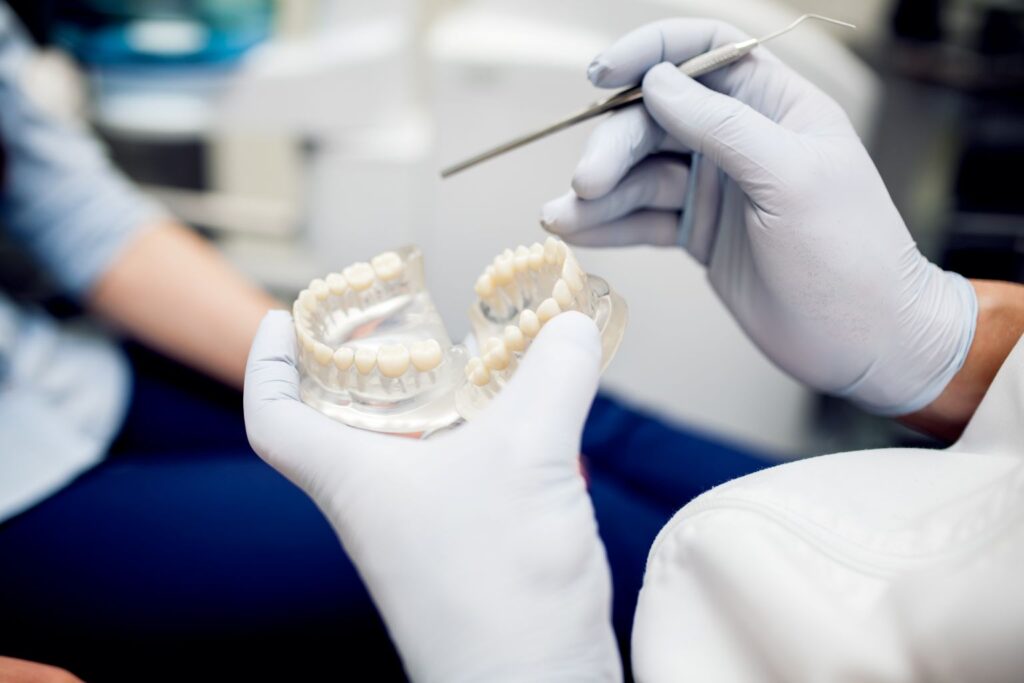A bridge is meant to restore aesthetics and function, but like natural teeth, it should be serviced on time and well-maintained. A fractured or worn-out bridge, if left unaddressed, will lead to pain, infection, or mastication problems. Visit a dentist in Castle Downs at the initial sign of malfunction for your bridge to be kept strong, functional, and safe for your dental health.
Understanding when to repair or replace your bridge is crucial. Regular dental checkups can help spot minor issues before they worsen. In this blog, we’ll look at common warning signs that indicate your dental bridge might need professional attention and what steps to take for long-term oral health.
1. How Can You Tell if a Dental Bridge is Bad?
If your bridge is loose or unstable, this is a sure sign that something is amiss. Your bridge should never be loose or shift about while you are chewing or talking. Other signs that your bridge is beginning to fail are cracks and chips on its surface and persistent pain.
Key symptoms are:
- Looseness or sense of movement on chewing.
- Visible destruction or breaks.
- Sudden pain or soreness near the bridge area.
2. Is Persistent Pain a Warning Sign?
Pain in the overall area where the dental bridge is located typically means that there is a cause, e.g., decay on the abutment teeth or an ill-fitting bridge. Gum irritation or infection that occurs under the bridge may also cause pain. If you are experiencing recurring pain or pressure, then it is time to sit down with a professional who performs dental bridges in Edmonton.
3. How Do I Know if My Tooth is Infected Under My Bridge?
An infection under a bridge may show as swollen gums, bad breath, or a bad taste in your mouth. You might also notice redness or tenderness in the gums. Left untreated, the infection can spread to the surrounding teeth and bone.
Common signs of infection include:
- Swelling or redness near the bridge.
- Bad breath or persistent foul taste.
- Increased sensitivity or throbbing pain.
4. Why Is It Important to Watch for Wear and Tear?
Bridges will eventually wear out as a result of chomping or grinding action. Small cracks and roughness catch rubbish and are difficult to clean and lead to decay. Polishing and professional cleaning now and then can prolong the life of your bridge.
5. When Should You Consider Replacement Instead of Repair?
If your bridge is older than 10–15 years or has structurally irreparable damage, replacement may be the better option. With new materials and technology on new bridges, there is a more natural look and lifespan. A visit to a dentist near you will make this determination.
Revive Your Smile with Professional Bridge Repair!
Experiencing any of the above symptoms? Don’t let the issue get out of control. Come in today at Albany Dental and let our experienced staff restore your comfort and confidence through master bridge care.
FAQs
How frequently should I have my dental bridge inspected?
At least every six months as a part of your regular dental examination for the earliest detection of decay or wear.
Is a loose bridge repairable without requiring a new one?
Yes, if not too serious, your dentist can re-cement or replace the bridge.
How long does a normal dental bridge last?
A bridge will last for 10 – 15 years if well maintained, but well-kept oral hygiene must be observed.
Is it possible to eat all foods with a dental bridge?
Yes, but do not eat hard or sticky foods that can loosen or destroy the bridge.
Can an infected tooth carrying a bridge be treated?
Yes, but it would primarily consist of removing the bridge to treat the tooth or gum adequately.
